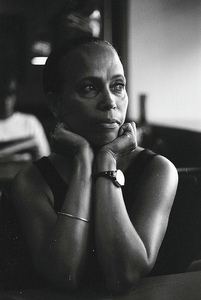re: Winter Topic: Art and Social Issues
As it becomes easier to view art from around the world (and publish art that anyone around the world can see), I think the artist is losing her power to say whether her work is political at all. To make this point, I want to look at two artists on EAS.
Mahdi Barajethi's "unerwa" offers an explicitly political piece of art. Literally, the relief bags full of flower and the United Nations Relief and Works Agency (UNRWA) video present a political body in action (politics is present in the photograph). Figuratively, the interplay between the actual relief (the bags) and the promotion of the relief (the video) is also political: the promotion hangs above the ruffled and keeling bags of flour, draping them in color on an otherwise empty floor. This is a political argument, a critique of how a political body behaves. Mahdi very clearly wants to make this point, and does.
Alternatively, let's look at one of the pieces by Sydney Lowe -an artist that might want to say something political, but there is no reason to believe that based solely upon the piece itself. Her third photograph down from the top, the single cropped black and white image of a woman, is a perfect example. Literally, this photograph has no political images: there is a middle aged woman of color with her elbows perched upon the bar of a diner, staring off into the distance. Perhaps the choice of black and white film, or the certain way her wrists and hands are pictured as particularly worn, offers a political interpretation. However, this is a stretch at best--a far cry from the explicit political messages Mahdi offers. In sum, I don't necessarily see any reason to view this photograph as political. (If you disagree with me, this is a great place to do so! Why do you think this piece is explicitly political?)
Yet, this photograph is ripe for interpretation, and as more people can view this photograph, the greater number of potential interpretations grows. If you grew up in the 1960s, this photograph could represent the freedom riders, and the state of civil rights today. If you are a philosopher, this could be a comment on challenges of being both a woman and a person of color--the intersection of minority roles in America and the challenges that come with that. If you live in a city, this could reveal the weird and troubling feeling of isolation that you feel even when you're amidst so much activity. My examples are United States-centric, and I do this only because I do not want to pretend to know the potential interpretations of those from other cultures. But my point is that they will see this photograph in their own way--everyone will see this photograph in his or her own way. Sydney has no control over this.
I don't know whether the political role of art has changed, or whether it should change. What I do suspect, though, is that--now more than ever--it is not in the artists hands to determine that answer.

